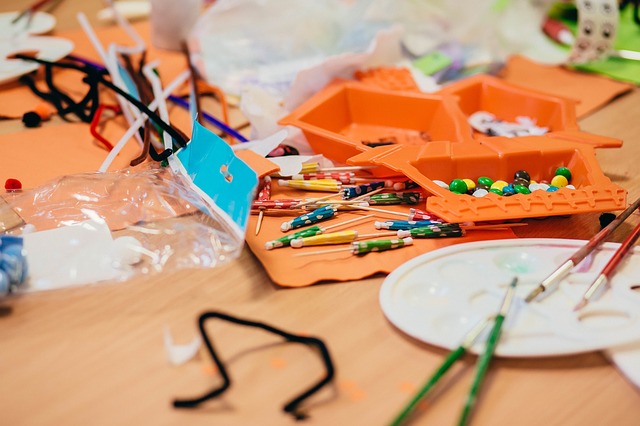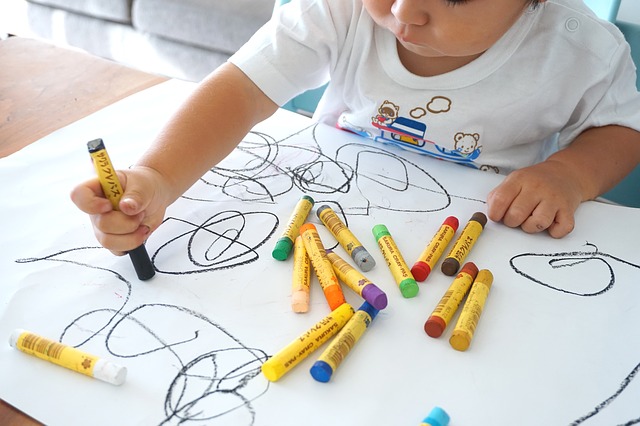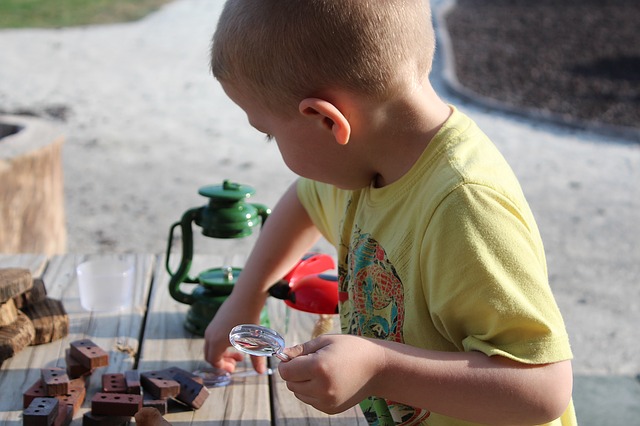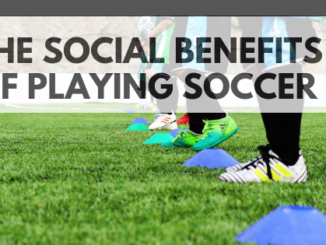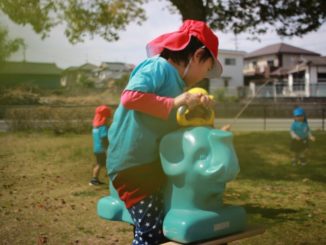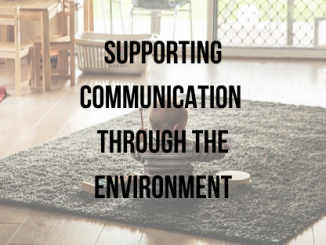This year my youngest child is in Foundation 1 (3-4 year olds) and I’m praying he doesn’t bring me home a card with his handprint on this Christmas. Christmas cards where handprints are transformed into festive symbols are certainly cute but I don’t really want one this year and here’s why;
Children in the Early Years Foundation stage are naturally extremely creative, but this is not maintained throughout their entire childhood. Indeed, it seems that creativity declines sharply around the age of 5 or 6 (Meador 1992) making the EYFS a sensitive period in the development of creativity.
With this in mind, I’m not sure that handprint cards, or similar activities, fit in with the development of creativity.
Defining creativity is notoriously difficult and it involves a number of components including imagination, originality (the ability to come up with ideas and products that are new and unusual) productivity (the ability to generate a variety of different ideas through divergent thinking) problem solving (application of knowledge and imagination to a given situation) and the ability to produce an outcome of value and worth.
The idea of the handprint Christmas cards (or other structured adult-led activity) is to produce an outcome of value and worth, but generally that is more focused on an adult’s perception of the product. Value and worth of a creative product should have more to do with the value that the child places on it and on the creative process than on the final outcome.
Malaguzzi (1993) explained “Creativity becomes more visible when adults try to be more attentive to the cognitive processes of children than to the result, they achieve in various fields of doing and understanding.”
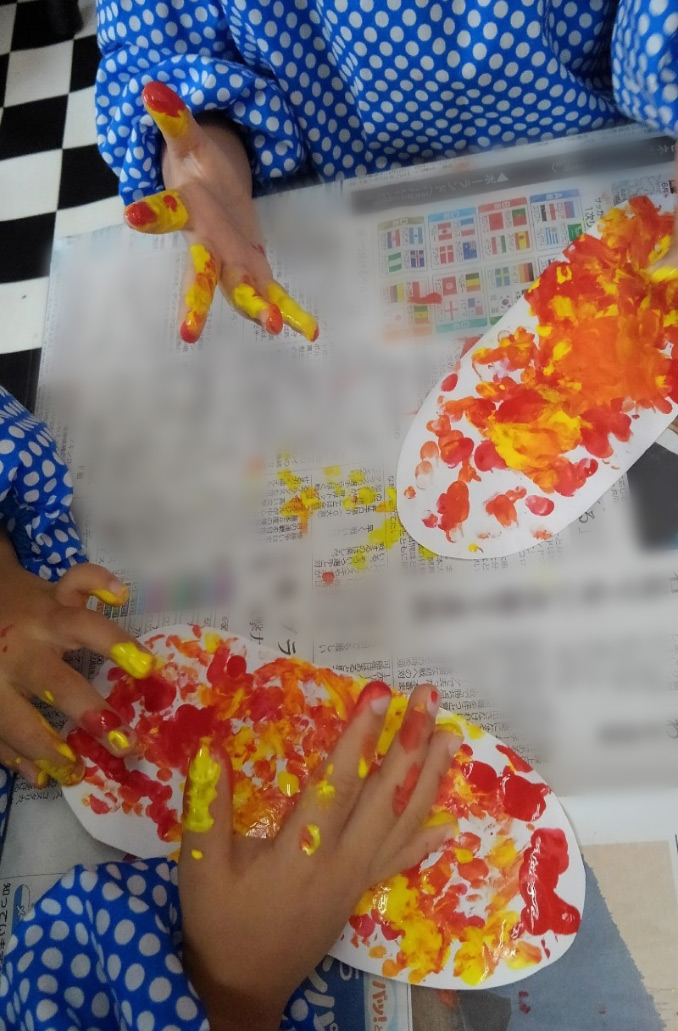
The goal of engaging in creative arts is to communicate, think and feel (Drew and Rankin, 2004) but in the case of the Christmas card, the creative process can be diminished to a production line type activity as practitioners aim to ensure that all children create a nice card to take home. Sometimes, art projects end up being produced by adults (through the control they exert over the process and product) for adults! It is actually more important that the children have the opportunity to experiment with different media and materials, understand how colours are mixed and construct with a purpose in mind (DfE 2012) than it is that they produce a nice result.
Encouraging children to produce a Christmas card to take home is perfectly fine, and most children will love to join in with the tradition but there is the opportunity to make it a much more creative process than the production line type activity that it all too often becomes. Providing a wide variety of resources for children to use, sparking imagination with Christmas stories and beautiful illustrations, and allowing children to work on their own designs and projects, applying resourcefulness, resilience and problem-solving skills along the way is arguably a more effective use of children’s and practitioners time.
I would much rather a card that looked a bit of a mess, which my child had made independently, and was proud of. I would much rather see that my child had been learning than have a piece of artwork from his key person.
However, developing creativity extends far beyond art activities. The 2000 curriculum guidance for the Foundation Stage (QCA) recognises that creativity is about more than what we would traditionally think of as ‘The Arts’ explaining that being creative enables children to make connections between one area of learning and another and so extend their understanding.
Similarly, The Robinson Report (1999) argues that, it is important not to confine ‘creativity’ solely to the expressive arts such as art, music and drama even though it is strongly linked to these areas, as creativity also plays a significant role in other areas of the curriculum such as mathematics and science.
In the EYFS it is best to use a broad definition of creativity, encompassing all curriculum areas rather than narrowing it down to just the expressive arts. This means that all children have creative potential, skills and means of expression (Sharp, 2004)
References:
DfE (2012) Non Statutory Guidance: Development Matters in the Early Years
Drew, W. F & Rankin, B. (2004) Promoting Creativity for Life Using Open-Ended Materials. YC Young Children; Washington Vol. 59, Iss. 4, p. 38-45.
Malaguzzi, L. (1993). ‘History, ideas, and basic philosophy: an interview with Lella Gandini.’ In: Edwards, C., Gandini, L. and Forman, G. (Eds) The Hundred Languages of Children: The Reggio Emilia Approach – Advanced Reflections. Second edn. Greenwich, CT: Ablex Publishing
Meador, K.S. (1992). ‘Emerging rainbows: a review of the literature on creativity’, Journal for the Education of the Gifted, 15, 2, 163–81.
Qualifications and Curriculum Authority (2000). Curriculum Guidance for the Foundation Stage. London: QCA.
Robinson Report. GREAT BRITAIN. DEPARTMENT FOR EDUCATION AND EMPLOYMENT. DEPARTMENT FOR CULTURE, MEDIA AND SPORT. NATIONAL ADVISORY COMMITTEE ON CREATIVE AND CULTURAL EDUCATION (1999). All Our Futures: Creativity, Culture and Education. London: DfEE.
Sharp, C. (2004) Developing young children’s creativity: what can we learn from research?, National Foundation for Educational Research, Retrieved from https://www.nfer.ac.uk/developing-young-childrens-creativity-what-can-we-learn-from-research


